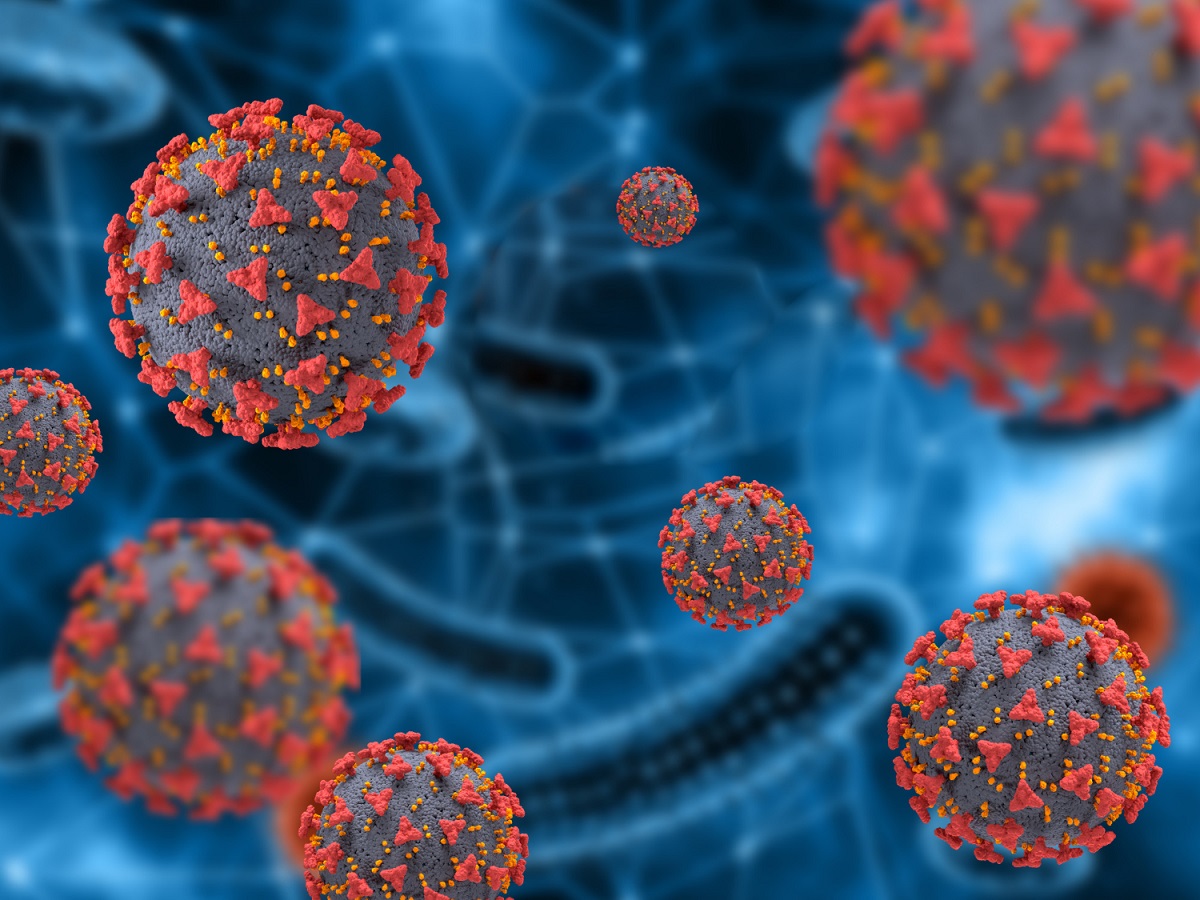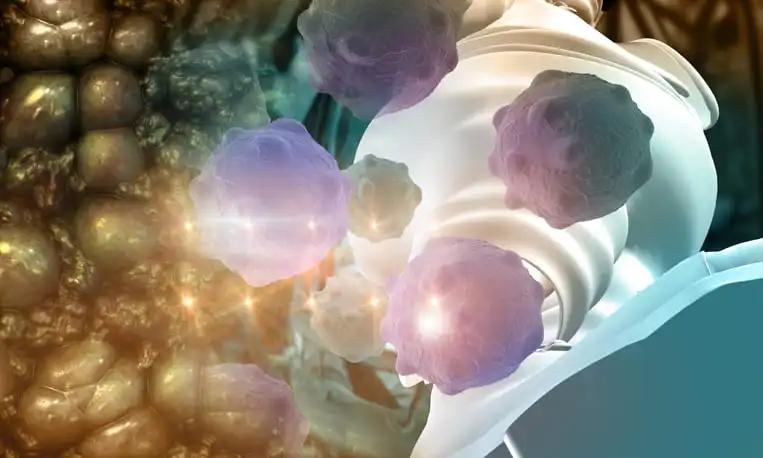KEY TAKEAWAYS
- The phase 1 & 2 trial aimed to assess the preliminary efficacy and safety of M-Pola in elderly, U/F pts with newly diagnosed DLBCL.
- The primary endpoints were to access safety and ORR.
- The result demonstrated that M-Pola showed promising early efficacy in elderly DLBCL but with a long-term follow-up.
The treatment options for elderly, unfit/frail (U/F) patients (pts) diagnosed with diffuse large B-cell lymphoma (DLBCL) are often constrained by comorbidities or functional decline. Full-dose chemoimmunotherapy (CIT) may not be a viable choice in such cases, necessitating less toxic yet effective alternatives. Mosunetuzumab (Mosun), a pioneering CD20xCD3 T-cell engaging bispecific antibody, has shown promise in redirecting T cells to eliminate B cells.
In previous studies, Mosun monotherapy exhibited efficacy, durable complete responses (CR), and manageable safety in untreated DLBCL pts who were elderly and unfit.
Subgroup analysis from an ongoing Phase Ib/II study of Mosun plus polatuzumab vedotin (Pola; M-Pola) in relapsed/refractory DLBCL patients aged 65 and above also demonstrated efficacy and a manageable safety profile.
Herein, Adam J Olszewski and his research group presented the initial findings data focused on elderly and unfit pts who are newly diagnosed with DLBCL.
In the interventional study, pts who were eligible for this study were either 80 years old or older, or between 65 and 79 years of age but considered unfit or ineligible for full-dose CIT based on a simplified Geriatric Assessment (sGA). Prior treatment with prednisone was permissible.
The participants were divided into two safety cohorts that administered escalating doses of Mosun subcutaneous (Mosun SC; Cohorts 1 and 2), followed by an expansion (Exp) phase. In Cycle (C) 1, step-up dosing of Mosun SC was administered on Days (D) 1, 8, and 15(Cohort 1: 5/15/45mg; Cohort 2 and Exp: 5/45/45mg) and the Exp phase. Additionally, a 1.8 mg/kg intravenous Pola was given on D 1 of C1-6.
Patients achieving a CR discontinued Mosun after eight C. Those with a partial response (PR) or stable disease could continue Mosun for a maximum of 17 C, provided there was no evidence of progressive disease (PD). The primary endpoints of the study were safety measures and the objective response rate (ORR), as evaluated by an independent review committee (IRC) using positron emission tomography-computed tomography (PET-CT) scans based on the Lugano 2014 criteria, at the end of treatment (EOT). Secondary endpoints included the CR rate, progression-free survival (PFS), and overall survival (OS), as assessed by both IRC and investigator [INV]-assessed).
For pts receiving their initial treatment with a sufficient time interval to undergo relevant response evaluations, the best overall response (BOR) and EOT responses were reported. The evaluation of cytokine release syndrome (CRS) was conducted according to the criteria established by the American Society for Transplantation and Cellular Therapy.
Around 108 pts were enrolled in the study and received M-Pola (Cohort 1: n=7; Cohort 2: n=13; Exp phase: n=88). As of the clinical cutoff date (CCOD), the median age was 81 years (range: 66–94), with 52% of pts being female. About 81% of pts had an ECOG performance status of 0–1, and 66% had Ann Arbor stage III–IV disease. According to the sGA, 59% were deemed unfit, and 40% were considered frail. The median (range) number of C administered was 7.5 (1–14) for Mosun and 6 (1–6) for pola vedotin.
The most common treatment-emergent adverse events (TRAEs) (≥20%) included neutropenia (32%), Cytokine release syndrome (CRS) (30%), and injection site reaction (20%). Grade 3–4 AEs occurred in 43% of pts, with neutropenia (28%) being the most frequent. Serious AEs were reported in 41% of pts, with CRS (14%) and infections (21%) being the most frequent (≥5%). Notably, COVID-19 pneumonia (10%) and COVID-19 infection (7%) were observed.
The majority of CRS events occurred in C1, with 30 out of 32 pts experiencing Grade 1–2 events and two pts experiencing Grade 3 events. All CRS events resolved within a median of 2 D (range: 1–6), with management including tocilizumab (7/32) and corticosteroids (3/32). AEs leading to the discontinuation of Mosun or pola occurred in 15% and 12% of pts, respectively. Fatal AEs were reported in 15 pts (14%), with eight cases related to COVID-19/COVID-19 pneumonia, two unexplained deaths, and one case each of Staphylococcal bacteremia, sepsis, pneumonia, pulmonary embolism, and suicide. The range of onset dates for fatal AEs was D 8-251.
As of the CCOD, the median follow-up was 7.5 months (range: 0–21). In the 90 evaluable pts from Cohort 2 and the Exp phase, the BOR and best CR rate per investigator assessment were 80% (72/90) and 61% (55/90), respectively. EOT response assessments per INV in 56 showed an ORR of 55% (31/56), CR in 45% (25/56),PD in 9% (5/56), PR in 11% (6/56), and 36% (20/56) without EOT (withdrawal of consent: 4/20; AEs: 13/20; early discontinuation per investigator: 2/20; PD in C1: 1/20).
The result concluded that the chemotherapy-free combination of Mosun and M-Pola showed initial effectiveness in elderly and unfit pts with newly diagnosed DLBCL. The safety profile of M-Pola was in line with that of the individual drugs. Nevertheless, it’s crucial to note that COVID-19 poses a significant risk in elderly and unfit patients undergoing treatment for DLBCL. Further details, including biomarker analyses and long-term follow-up data, will be provided.
This study is sponsored by Hoffmann-La Roche.
Source: https://ash.confex.com/ash/2023/webprogram/Paper177588.html
Clinical Trial: https://clinicaltrials.gov/study/NCT03671018
https://clinicaltrials.gov/study/NCT03677154
Olszewski AJ, Eradat H, Avigdor A, et al. “Mosunetuzumab and Polatuzumab Vedotin Demonstrates Preliminary Efficacy in Elderly Unfit/Frail Patients with Previously Untreated Diffuse Large B-Cell Lymphoma” Presented at ASH 2023. (Abstract: 855)









